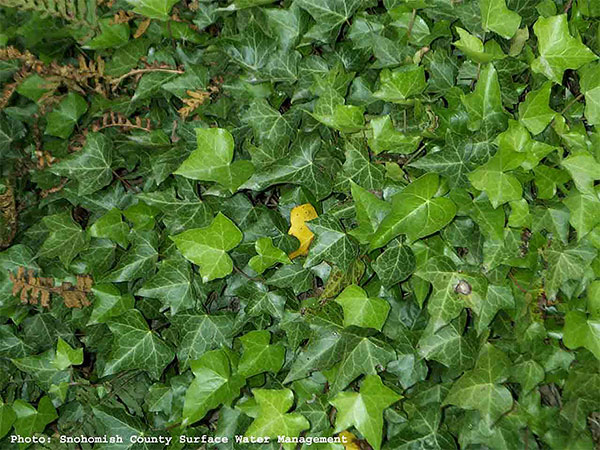when they are both full grown
of all the trees that are in the wood
the holly bears the crown
Holly
 Holly leaves used to be used as a diaphoretic (induces sweating to reduce fever) and an infusion (medicinal tea) of them was given in catarrh (mucous), pleurisy and smallpox. They have also been applied in intermittent fevers and rheumatism for their febrifugal (fever reducing) and tonic properties, and as a powder, or taken in infusion or decoction, have been used successfully where Cinchona has failed. This action is believed to be caused by a bitter alkaloid named Ilicin. The juice of the fresh leaves has been applied in cases of jaundice.
Holly leaves used to be used as a diaphoretic (induces sweating to reduce fever) and an infusion (medicinal tea) of them was given in catarrh (mucous), pleurisy and smallpox. They have also been applied in intermittent fevers and rheumatism for their febrifugal (fever reducing) and tonic properties, and as a powder, or taken in infusion or decoction, have been used successfully where Cinchona has failed. This action is believed to be caused by a bitter alkaloid named Ilicin. The juice of the fresh leaves has been applied in cases of jaundice.The berries have totally different qualities than the leaves, being violently emetic and purgative. A small number have caused excessive vomiting soon after they are swallowed, though thrushes and blackbirds eat them. They have been used medicinally for dropsy; and, as a powder, as an astringent to stop bleeding.
Culpepper says 'the bark and leaves are good used as fomentations for broken bones and such members as are out of joint.' He believed the berries cure colic.
Ivy
Ivy has historically been used in the treatment of paralysis, acute rheumatism and articular stiffness, and in various forms of chronic and obstinate eruptive diseases. It used to be listed in the United States Pharmacopeia. It is used frequently by homoeopaths for rheumatism, ringworm and other skin disorders, and is considered by them to be one of the most useful remedies in most cases of Nettlerash, especially if caused by someone's particular constitution, where the eruption is caused by a particular food.
The fluid extract, prepared from the fresh leaves, is mostly given in the form of a tincture, in doses of 5 to 30 drops. In small doses it is an excellent sedative to the nervous system, but it must be given with care, as internally it may cause gastric intestinal irritation, drowsiness, stupor and delirium.
It has been used in cases of urinary incontinence. For this, the bark of the root of R. aromatica is also used very successfully. An infusion of 1 OZ. to a pint of boiling water is taken in wineglassful doses.
The fluid extract of R. Toxicodendron can be used as a vesicant or blister producer, like cantharides, mezeron, and oil of Mustard.
The best preparation is a concentrated alcoholic tincture made from the green plant at a strength of 1 in 4, with 25% alcohol. The dose is 1 to 5 drops three times a day. A solid extract is not used due to the extreme volatility of the active principles of the crude drug.
Its milky juice is also used as an indelible ink for marking linen, and as an ingredient of liquid dressings or varnishes for finishing boots or shoes, though R. venenata is more extensively used for the latter purpose.
*This is for informational purposes only, please do not use this remedy without the supervision of a professional.
http://botanical.com/botanical/mgmh/h/holly-28.html

Singing Nettles Herbal Clinic by Amanda Dainow is licensed under a Creative Commons Attribution-NonCommercial-NoDerivs 3.0 Unported License.
Based on a work at singingnettles.blogspot.com.
Permissions beyond the scope of this license may be available at http://singingnettles.blogspot.com/.
©ALL TEXT AND IMAGES COPYRIGHT

Obat Wasir
ReplyDeleteObat Wasir Alami
Obat Wasir Ampuh
Obat Wasir Herbal
Obat Wasir Tradisional
Obat Wasir Mujarab
Obat Wasir Manjur
Obat Wasir Apotik
Jual Obat Wasir
Cara Mengobati Wasir
Cara Menyembuhkan Wasir
Obat Wasir Ambeclear
Harga Obat Wasir
Nama Obat Wasir
Wasir
Penyakit Wasir
Gejala Wasir
Ciri Ciri Wasir
Ambeien
Ambeyen
Obat Ambeien
Obat Ambeyen
Obat Ambeien Alami
Obat Ambeyen Alami
Obat Ambeien Ampuh
Obat Ambeien Herbal
Obat Ambeien Tradisional
Obat Ambeien Manjur
Obat Ambeien Mujarab
Cara Mengobati Ambeien
Cara Menyembuhkan Ambeien
Cara Alami Mengobati Ambeien